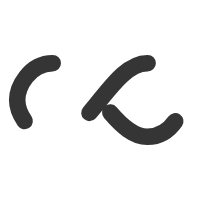In strict curl competitions, lifters must start with the bar against their thighs, head, shoulders, and buttocks against the wall, and arms fully extended. The lift begins with a “curl” command and the bar must continue upward without any downward movement or assistance from legs or hips. The bar must be brought to a fully curled position, and the lifter must wait for a “rack” command to return the bar.
Each competitor has three competition attempts. The highest weight of a valid attempt is included in the competition.
The fourth attempt is for records only. This attempt can only be made by competitors who will strive to create a new record in the 4th attempt and who have at least one valid attempt out of the three allowed competition attempts.
STRICT CURL RULES:
- The lifter shall face the front of the platform. The bar shall be held horizontally across the thighs with the palms of the hands facing outward
and fingers gripping the bar. The feet shall be flat on the platform with the knees locked and arms fully extended. The lifter shall have head, shoulders
and buttocks against the wall during the lift. - After removing the bar from the rack, the lifter must move backwards to the wall to establish his/her starting position. Lifter shall wait in starting
position for the Head Referee’s signal. The signal will be given once lifter is motionless and the bar is properly positioned with your head up, chin up,
arms extended fully down and heels of feet no further than 12” from the wall. The Head Referee’s signal shall consist of an upward movement of the
arm and the verbal command “curl”. - No” flights”, lifters will compete from their 1st attempt, lightest to heaviest. Three attempts will be allowed unless going for record attempt. If you fail
lift, you may continue to “retry” that weight until successful or run out of attempts. NO LOWERING OF WEIGHT. Easy opener is suggested. Wraps
allowed, NO GLOVES. - Once the curl command is given, the lifter must bring the bar up to the fully curled position (bar near the chin or throat with palms facing backwards). The head, shoulders and buttocks must remain against the wall throughout the entire lift.
- The legs and hips may not be used in any way for momentum to complete the lift. Lifter may not lean back to assist in bringing the weight up. Any
thrusting of the legs or hips is not allowed. - When the lifter has reached the finished position, the Head Referee’s signal shall consist of a downward movement of the hand and the verbal
command “down”. The signal will not be given until the bar is held motionless and the lifter is in the apparent finished position. - At the completion of the lift, the head, shoulders and buttocks must remain against the wall. Lifter will need to wait the signal to replace the bar. This
will consist of a backward motion of the hand and the verbal command “rack”. - Any raising of the bar or deliberate attempt to do so will count as an attempt.
- The lifter may, at the discretion of the Head Referee, be given an additional attempt at the same weight if failure was due to an error by one or more of the loaders.

